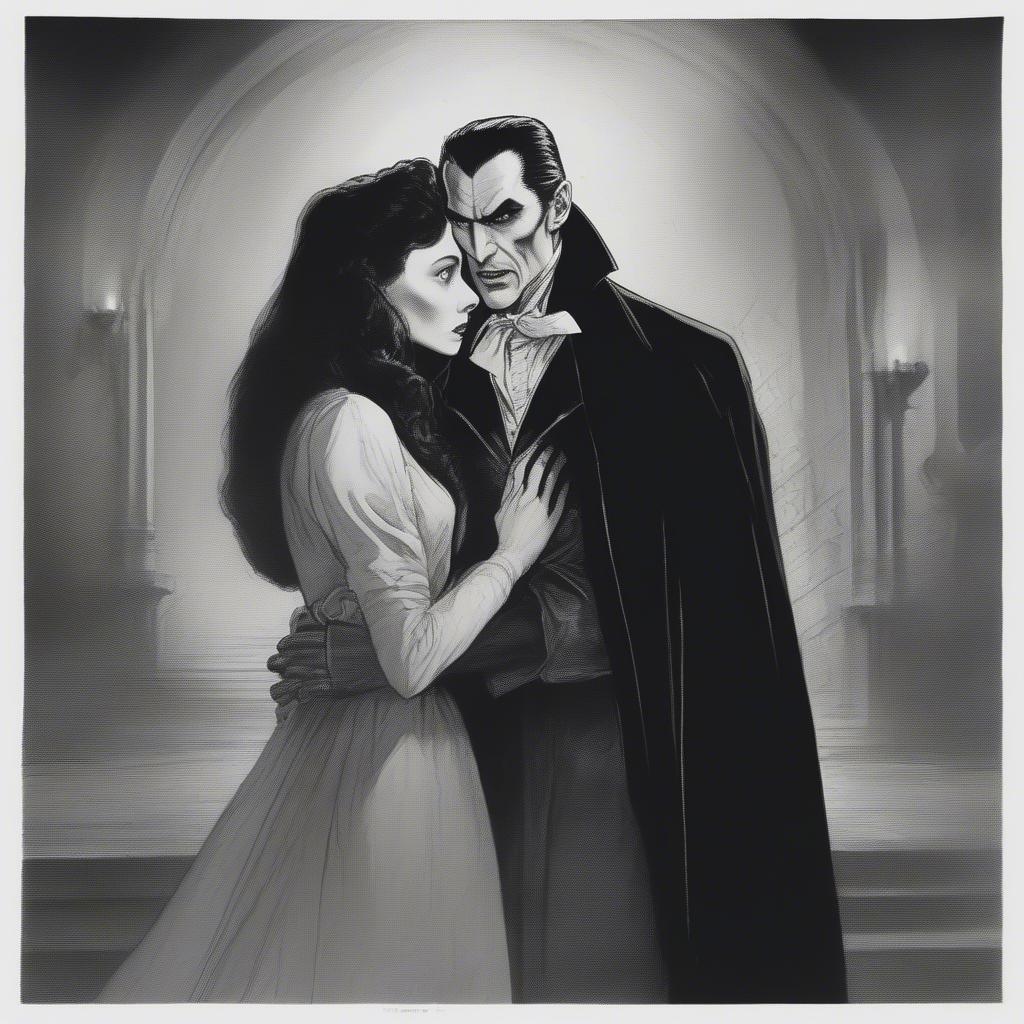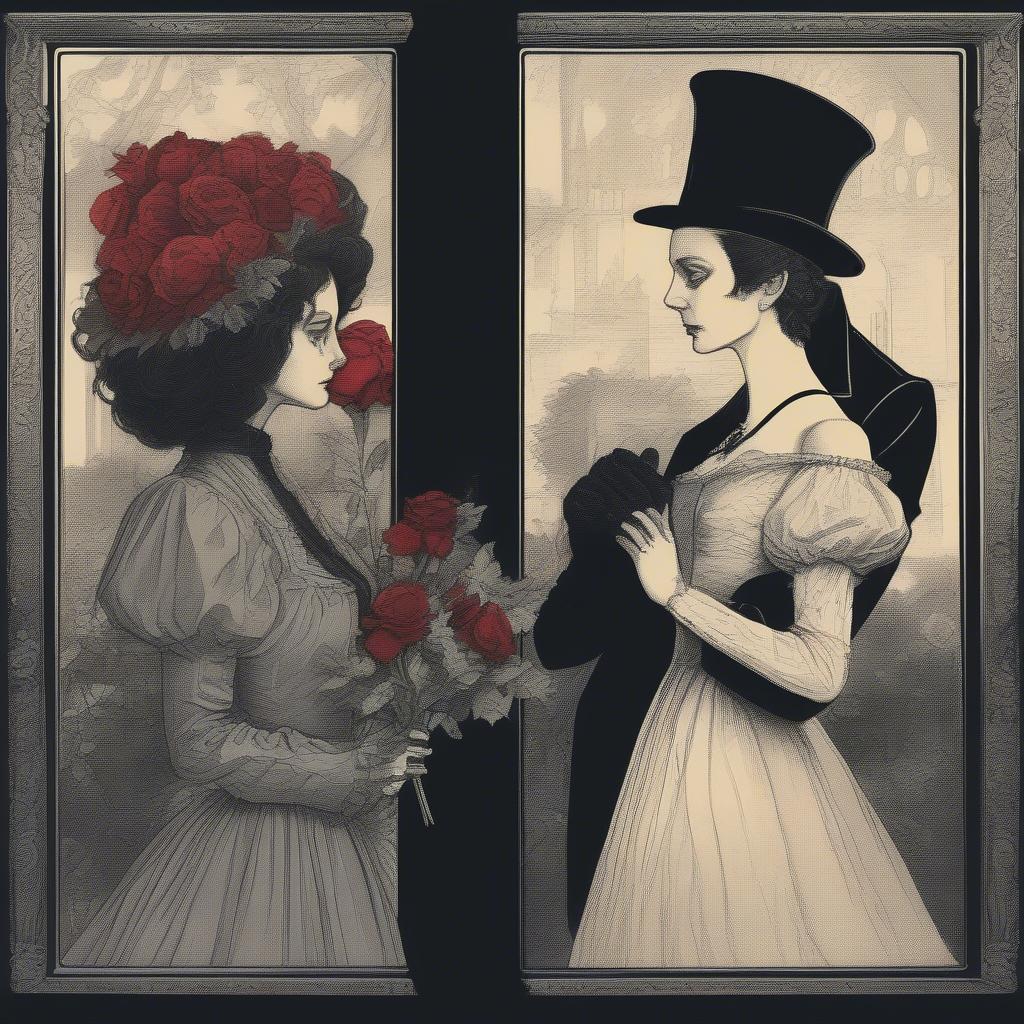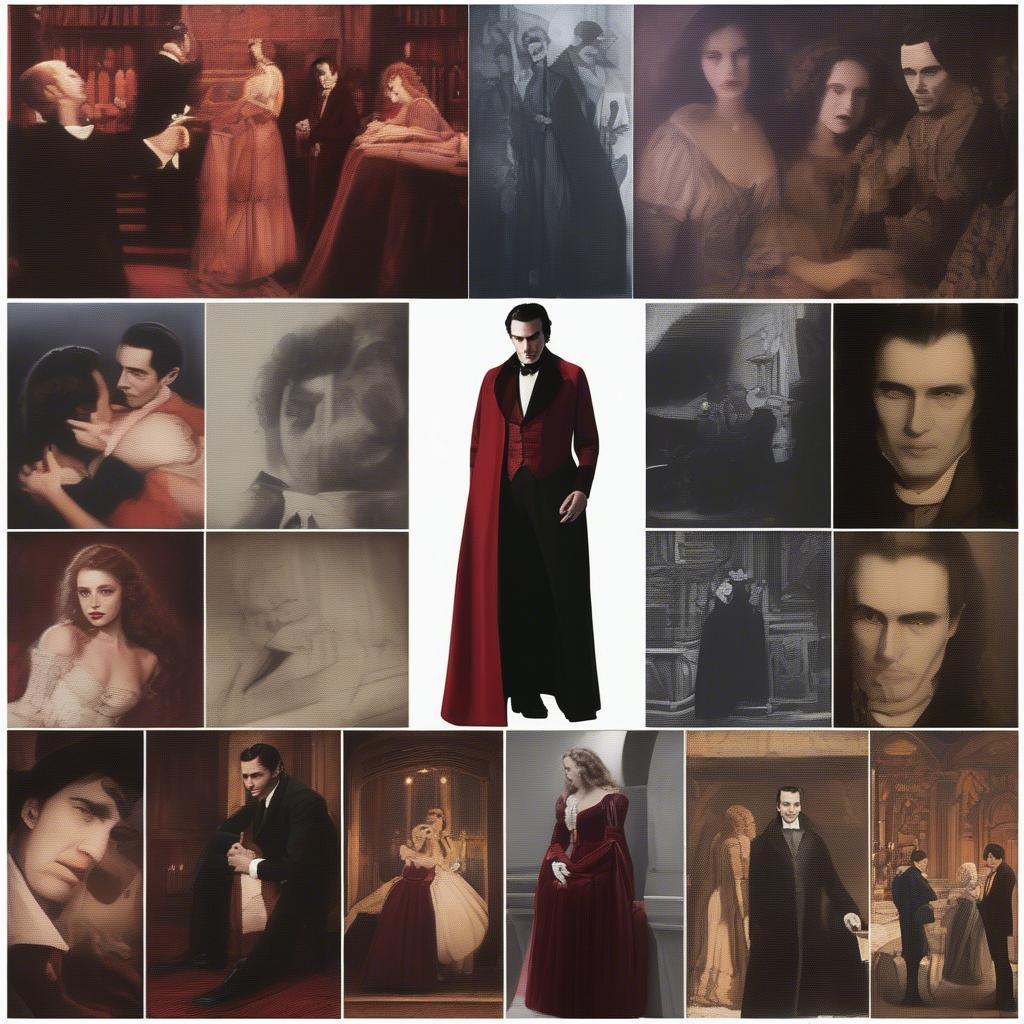Is Dracula A Love Story? The question has captivated readers and scholars for over a century. While Bram Stoker’s iconic novel is undoubtedly a gothic horror masterpiece, the themes of love, desire, and longing are deeply intertwined with its darker elements. Unraveling this complexity requires a deeper look into the relationships and motivations that drive the narrative.
Love, Loss, and the Undying: Examining Dracula’s Romantic Threads
The novel presents several different facets of love, from the pure and devoted affection between Mina and Jonathan Harker to the more sensual and predatory desires of Dracula himself. Is Dracula’s pursuit of Mina and Lucy driven by genuine love, or is it a twisted form of possession and control? This ambiguity lies at the heart of the debate.
-
Dracula’s “Love”: Dracula’s attraction to Mina and Lucy is clearly not conventional romance. He views them as sources of sustenance, both physical and spiritual. His desire to transform them into his undead brides suggests a longing for companionship, but it’s a companionship built on domination and the denial of free will.
-
Mina and Jonathan’s Bond: Their love story serves as a powerful counterpoint to Dracula’s predatory advances. Their unwavering devotion and support for each other in the face of unimaginable horror underscore the strength of human connection and the enduring power of love to conquer darkness.
-
Lucy’s Suitors: The multiple proposals Lucy receives highlight Victorian societal expectations of love and marriage. While her suitors represent conventional romantic ideals, their inability to save her from Dracula emphasizes the limitations of traditional notions of love in the face of supernatural forces.
 Dracula and Mina: Exploring the Romantic Tension
Dracula and Mina: Exploring the Romantic Tension
The Allure of the Forbidden: Eroticism and the Vampire Myth
Dracula’s seductive power is undeniable. He embodies the forbidden allure of the Other, challenging the rigid moral codes of Victorian society. This transgressive element adds a layer of eroticism to the narrative, further complicating the question of whether Dracula’s actions can be interpreted as a form of love, albeit a distorted one.
-
The Power of Blood: The act of drinking blood, so central to the vampire myth, is inherently sensual and intimate. This symbolic act blurs the lines between life and death, desire and destruction, further fueling the debate about the nature of Dracula’s motivations.
-
The Threat to Victorian Sensibilities: Dracula’s predatory sexuality posed a direct challenge to the repressed sexual mores of Victorian England. His transgressive behavior highlights the anxieties surrounding female sexuality and the fear of uncontrolled desire.
 Contrasting Victorian Romance and Dracula's Dark Desires
Contrasting Victorian Romance and Dracula's Dark Desires
Is It Love, or Something Else Entirely? Deconstructing the Vampire’s Obsession
Perhaps the most compelling interpretation is that Dracula’s actions are not driven by love in the human sense, but rather by a profound sense of loneliness and a desire for connection, however twisted. He seeks immortality not only for himself but also for those he chooses to transform, suggesting a desire to create a community of his own.
-
The Tragedy of Dracula: Seen through this lens, Dracula becomes a tragic figure, driven by a primal longing for belonging that manifests as a destructive obsession.
-
The Power of Human Connection: The novel ultimately affirms the power of human love and connection to overcome even the darkest forces. The defeat of Dracula is achieved through the collective efforts of those bound by love and friendship.
Conclusion: Is Dracula a Love Story? It’s Complicated.
Ultimately, the question of whether Dracula is a love story remains open to interpretation. While it’s difficult to classify Dracula’s actions as love in the conventional sense, the themes of love, desire, and longing are undeniable and integral to the narrative. The novel’s enduring power lies in its exploration of the complex and often contradictory nature of human emotions, forcing us to confront the darker aspects of desire and the enduring power of love in the face of darkness. Is Dracula a love story? Perhaps it’s more accurate to say it’s a story about love, loss, desire, and the enduring human need for connection, even in the most monstrous of forms.
FAQ
-
What are the main love stories in Dracula? The primary love story is between Mina and Jonathan Harker. The novel also explores Lucy’s relationships with her suitors and the more complex, predatory “love” Dracula exhibits towards both Mina and Lucy.
-
How does Dracula’s portrayal of love differ from Victorian ideals? Dracula’s “love” is possessive and controlling, contrasting sharply with the idealized, romantic love prevalent in Victorian literature. His actions challenge the rigid social and sexual norms of the time.
-
What role does blood play in the novel’s exploration of love and desire? The act of consuming blood represents a twisted intimacy, blurring the lines between life, death, and desire. It highlights the dangerous and seductive aspects of Dracula’s power.
-
Why is the question of whether Dracula is a love story still debated? The ambiguity surrounding Dracula’s motivations, the complex portrayal of different kinds of love, and the intertwining of romantic themes with horror elements all contribute to the ongoing debate.
-
What can we learn about love from Dracula? Dracula explores the multifaceted nature of love, including its darker aspects. It highlights the importance of free will, respect, and equality within loving relationships, contrasting them with Dracula’s possessive and controlling behavior.
 Dracula: Exploring Themes of Love, Loss, and Desire
Dracula: Exploring Themes of Love, Loss, and Desire
Need further assistance understanding the intricacies of love and relationships? Contact us at contact@daiduongtranhba.com or visit us at Michigan Ave, Suite 3100, Chicago, IL 60611, USA. We have a 24/7 customer service team ready to help.

